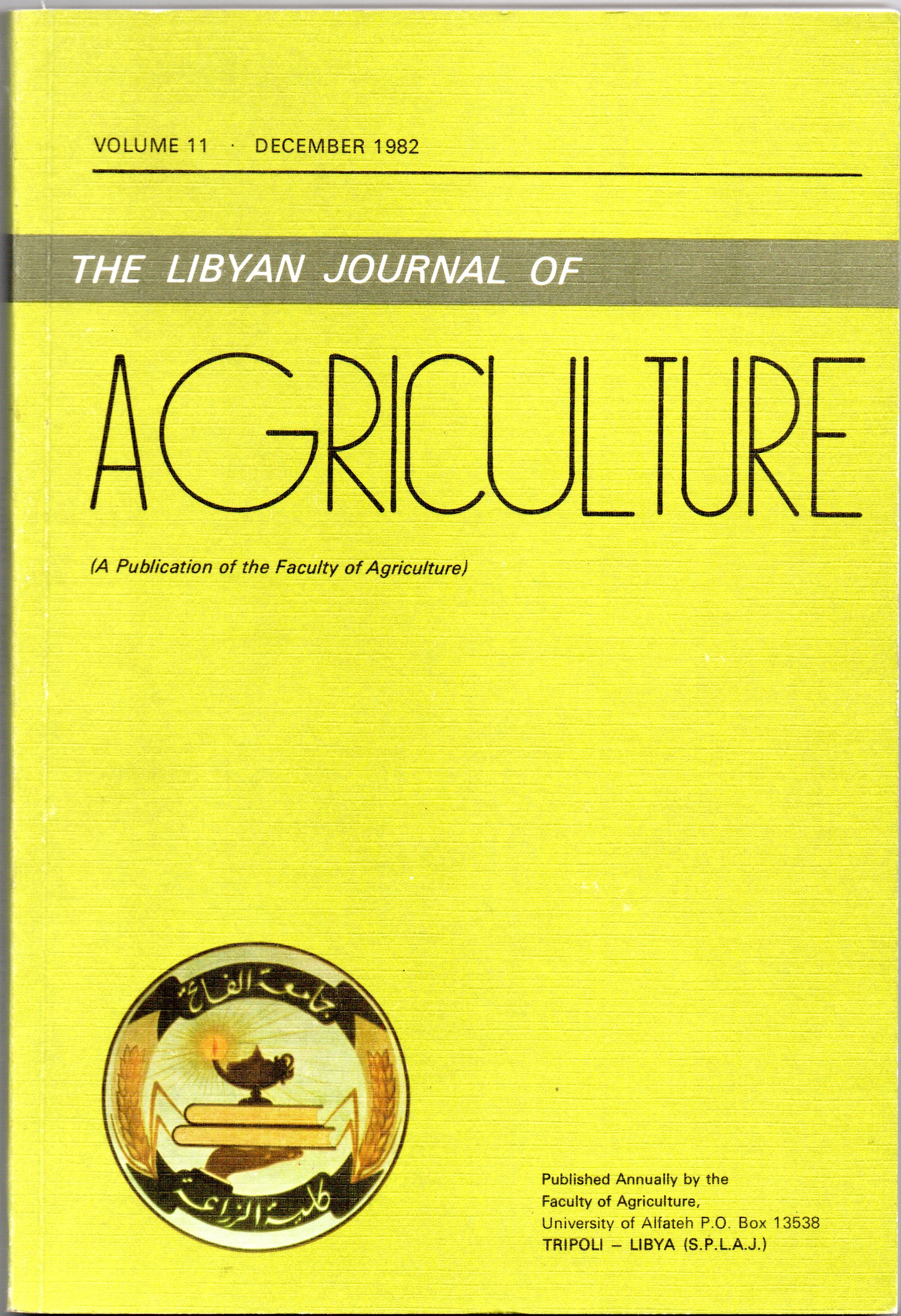Occurrence of Fig Mosaic Disease on Fig Trees in Wadi El-Hai Agricultural Project—Libya
Main Article Content
Abstract
Fig trees (Ficus carica L.) are considered one of the important fruit crops in the Libyan Jamahiriya. Fig mosaic virus was reported to infect fig trees in different parts of the country (1, 2, 4, 5) producing two types of leaf mosaic. The first type of mosaic is characterized by small irregular yellowish-green spots with paler colored margins, and limited by the leaf veins. The second type, leaves exhibit pale green areas with irregular margins and not limited with the leaf veins especially the larger ones. Leaf malformation might occur if the plants were heavily infected, and paler colored spots appear on the fruits. Often the small fruits shrink and drop. Also infected trees have small amounts of fruits.
This study was carried out in 1981 to determine the percentage of infected trees and the extent of susceptibility among 29 randomly selected farms. Fig trees planted in 390 farms having a total area of 780 hectars. The planted cultivars are: Brogiotta Nero, Brogiotta Bianca, Dottato, Soltani, and Jebali (Local).
The fig trees that showed the mosaic disease exhibited varying kinds of leaf mosaic (Fig. 1), and malformation in addition to spotting of the immature fruits. It was found that out of 5,550 surveyed trees 2,006 trees (36%) showed the mosaic disease. All planted cultivars were apparently susceptible to the disease. However, it was noticed that the Soltani cultivar was highly susceptible, whereas the Jebali (Local) cultivar was less susceptible.
There is no effective control measure for fig mosaic disease. However, care should be taken when choosing cuttings for propagation, by selecting them from mosaic-free plants (3).

